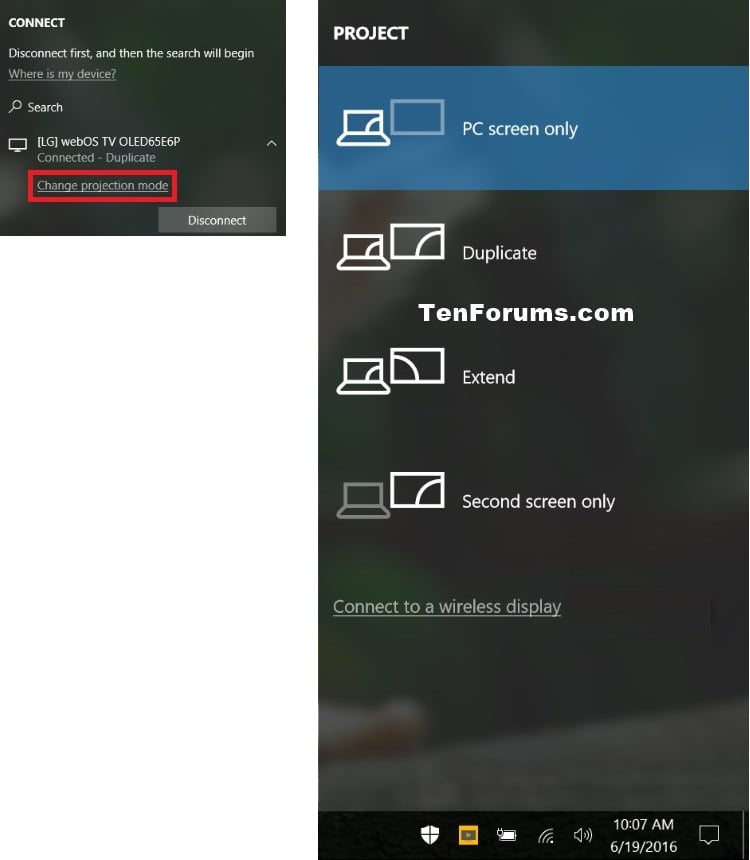
Content broadcast: Allow other devices to see the current displayed content on EZCast Pro by web browser. Conference control: Administrator mode to control all connections via Web browser.  Off-line mode: Allow you to enter app and use some features even without connecting EZCast Pro device. Preferred device: Remember the current device and WiFi environment as a favorite one to save the connection method. Host Control: Add Host role to control split screen. Split Screen: Allow 4 different devices to connect and display content on EZCat Pro device. The application is also different, and is called EZCast Pro (Android 4.0+, but also available for iOS) with the following extra features: If you happen to have an MHL capable HDMI TV, you won’t need any cable, as the dongle will be powered via your HDMI port, but if you don’t, simply connect the USB cable to the USB port of your TV. Tronsmart T2000 comes with an HDMI cable, a USB cable, and a power manual. Th extra RAM is needed to take advantage of the new EZCast pro features such as multiple screens. The hardware is based on same Action Semi SoC as the original EZCast dongles, but they’ve doubled the amount of RAM, upgraded Wi-Fi from 150 Mbps to 300 Mbps, and now output 1080p60 instead of just 1080p30. Power – 5V/1A via micro USB, 5V/0.9V via MHL. Misc – Power and Wi-Fi status LED, switch for MHL / USB power, internal key for firmware update. Video Support – Up to 1080p30 video decode, 1080p50/60 video output. Standards – Miracast, Airplay, DLNA, and EZCast. Wi-Fi – Single band 802.11 a/b/g/n Wi-Fi 2T2R up to 300 Mbps. SoC – Action Semi AM8251 500MHz (MIPS). Tronsmart T2000 is the first device I’ve heard of, that’s EZCast Pro capable.
Off-line mode: Allow you to enter app and use some features even without connecting EZCast Pro device. Preferred device: Remember the current device and WiFi environment as a favorite one to save the connection method. Host Control: Add Host role to control split screen. Split Screen: Allow 4 different devices to connect and display content on EZCat Pro device. The application is also different, and is called EZCast Pro (Android 4.0+, but also available for iOS) with the following extra features: If you happen to have an MHL capable HDMI TV, you won’t need any cable, as the dongle will be powered via your HDMI port, but if you don’t, simply connect the USB cable to the USB port of your TV. Tronsmart T2000 comes with an HDMI cable, a USB cable, and a power manual. Th extra RAM is needed to take advantage of the new EZCast pro features such as multiple screens. The hardware is based on same Action Semi SoC as the original EZCast dongles, but they’ve doubled the amount of RAM, upgraded Wi-Fi from 150 Mbps to 300 Mbps, and now output 1080p60 instead of just 1080p30. Power – 5V/1A via micro USB, 5V/0.9V via MHL. Misc – Power and Wi-Fi status LED, switch for MHL / USB power, internal key for firmware update. Video Support – Up to 1080p30 video decode, 1080p50/60 video output. Standards – Miracast, Airplay, DLNA, and EZCast. Wi-Fi – Single band 802.11 a/b/g/n Wi-Fi 2T2R up to 300 Mbps. SoC – Action Semi AM8251 500MHz (MIPS). Tronsmart T2000 is the first device I’ve heard of, that’s EZCast Pro capable. 
There’s now a new EZCast Pro wireless adapters that adds features such for four split screens display, conference control via web browser, and content broadcast to multiple screens, as well as improved wireless performance thanks to 2T2R Wi-Fi. I’ve reviewed a few including Tronsmart T1000 and MeLeCast S1, and found them to work relatively well, with some caveats, in Android.

EZCast dongles, tiny HDMI streaming Wi-Fi stick with support for Airplay, Miracast, DLNA, and their own proprietary EZCast protocol first appeared about a year ago.







 0 kommentar(er)
0 kommentar(er)
